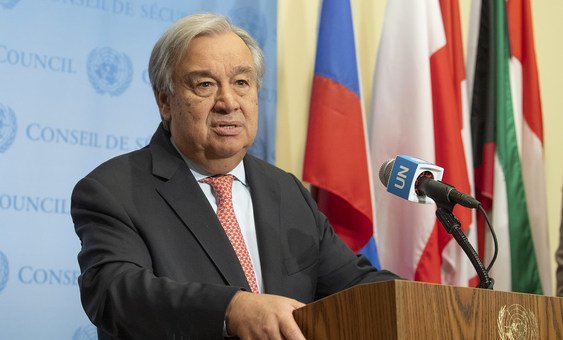UN Secretary-General António Guterres addresses the media at UN Headquarters in New York (file photo). He said on Wednesday it was everyone’s
With war ramping up across the Middle East on Wednesday, UN Secretary-General António Guterres appealed for the violence to end now.
“I condemn the broadening of the Middle East conflict, with escalation after escalation,” he said in a tersely worded statement.
“This must stop. We absolutely need a ceasefire.”
Rising hostilities
Iran fired waves of ballistic missiles at Israel on Wednesday, just hours after Israel launched what it called a “limited” ground incursion into southern Lebanon, according to media reports.
There were no immediate reports of any injuries on the ground in Israel and the Israeli military said around 180 missiles were fired, most of which were intercepted.
The developments follow Israeli airstrikes in the southern suburbs of the Lebanese capital, Beirut, on Friday, that targeted and killed the leader of the Hezbollah armed group Hassan Nasrallah, which is backed by Iran.
Last month, dozens were killed and thousands injured, in two consecutive days of electronic device explosions targeting Hezbollah members.
Simmering conflict
Cross-border attacks between Israeli forces and Hezbollah militants have increased in the context of the Gaza war, which is about to enter a second year.
Nearly 20 years ago, the two sides engaged in hostilities in Lebanon. In response, the UN Security Council adopted a resolution aimed at ending the 34-day conflict.
Resolution 1701 (2006) called for the existing UN Interim Force in Lebanon (UNIFIL) to be given more robust rules of engagement and expanded to include up to 15,000 peacekeepers to support Lebanese forces as they deployed across the south of the country at the same time as Israel withdrew from the area.
Learn more about the resolution in our explainer.
More to follow…


